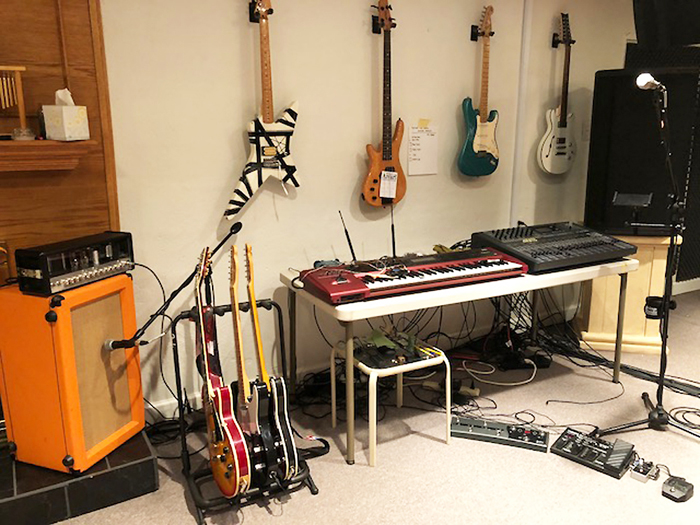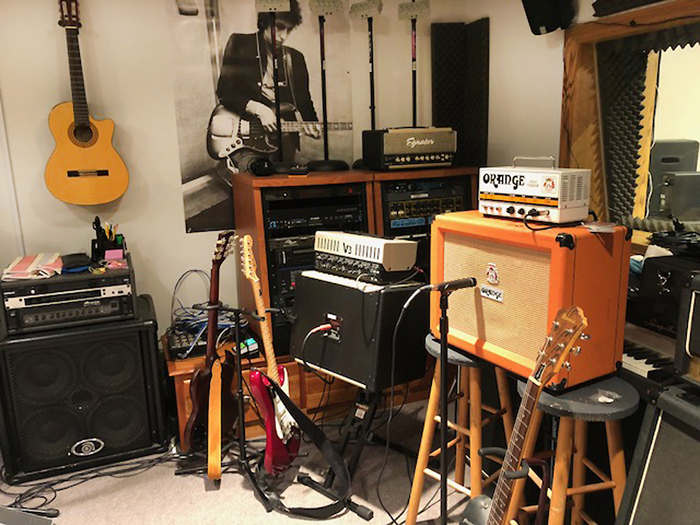
A check of the main mix EQ revealed three pretty drastic filters. That’s a bit of a red flag to system techs because no competently designed system needs that much correction, so it tells me there are issues elsewhere. Often, the rig is misconfigured, or the EQ is correcting some serious tonal issues upstream (at the inputs). Sure enough, a lot of the channel EQs were pretty extreme as well.
A quick check of the configuration of the powered loudspeakers showed that they were running in full-range mode instead of being crossed over to the sub, and then the sub was paralleled off the right main. This makes sense in terms of convenient cable runs, as the sub was located next to the right main, but it doesn’t do any favors for the gain structure of the system.
It also means that a given channel’s LF contribution will depend on its panned location in the stereo field, which is, to put things mildly, not optimal. So we want to feed the sub a mono sum of the main mix, not just one side.
Or do we? I already had a complaint that the LF was too much. The band had about 20 inputs, of which only two (kick drum, bass amp direct out) would be sending useful information to the subs. So it makes a lot of sense to drive the sub from a post-fader aux instead, which keeps the desired information going to the sub but eliminates rumbles, booms, and 17 microphones’ worth of reentry summation (bleed). This goes a long way towards the fabled “tight bass” we all desire.
The board has a mono bus, so that’s easy enough. But when I checked the routing to the outputs, it looked like the right side of the mains bus was patched to both main speakers. Oops. This meant I couldn’t trust any of the output routing. I used the console’s onboard oscillator to send a tone to each physical output to see where it popped up. I also found an left/right reversal in one of the IEM transmitters.

OK… I’ve just crossed the line between “repair” and “replace.” At this point it’s faster for me to start from scratch and rewire the whole thing than try to trace each cable and troubleshoot. I saved a show file on the desk so I could always go back to the chaotic-but-functional configuration if my little project didn’t go according to plan. Then I pulled out every single XLR cable in the room and started over.
And They’re Off!
First, I zeroed out the console, leaving nothing but the input channel names to indicate the input plot. Step one: Get the system outputs up. I went into the powered loudspeaker DSP menus, set them all to unity gain (they were unmatched), and configured the DSP preset high-pass filter for this specific main/sub combination.
Always go with the manufacturer settings unless you’re absolutely sure they cannot work. These settings are the results of thousands of dollars and hours of R&D that are virtually impossible to replicate in the field in 10 minutes by ear. (Uphill… both ways.)
For pretty much all of the 32-input, 16-output digital desks on the market, the default routing will route main L/R to outputs 15/16. Even if I utilize a matrix to drive the PA, I still use the last two physical outputs on the desk for L/R. It’s this type of consistency that makes all the difference in a hectic environment.
Next to that goes my sub drive, which in this case is the main mono bus, on output 14. My monitor mix outputs always start at output 1 and ascend from there. Using this system, I can discern the number of monitor mixes and how the mains are being driven, just by looking at the back of the desk.
In this case, we had a pair of vocal fill wedges mounted to the ceiling, a drum wedge, a shared IEM mix for all of the band members, and a dedicated IEM mix for the lead vocalist. This brings my output configuration to:
1 – Vocal Wedges
2 – Drum Wedge
3/4 – Band IEM
5/6 – Vocalist IEM
14 – Subwoofer
15/16 – Main L/R
Notice that all of the stereo pairs are odd/even rather than even/odd. Many digital desks only allow linking stereo channels odd/even, so I always follow this convention just to avoid getting stuck later. I tested each output with the oscillator to confirm that everything was coming up in the right spot and at the right level. Then I wrote down the output patch and posted it on the wall. The next time I (or someone else) needs to work on the system, this will save a bunch of time and energy.
I confirmed that all of the output EQs were flattened and played some test material through the PA. The system sounded much better. I ended up with a small cut around 1 kHz and a high-shelf cut of about 2 dB above 6 kHz.
When tuning systems, it’s important to ask yourself if the corrective measures make sense. The mains are located only a few feet from the listeners, so I vote yes: the 1 kHz cut is very likely in the heart of the volatile crossover range for the 15-inch woofers, and in the extreme nearfield, some instability would be expected. Likewise, being so close to the mains means virtually no HF attenuation due to air absorption, so pulling the HF back a bit seems logical. Onward.
